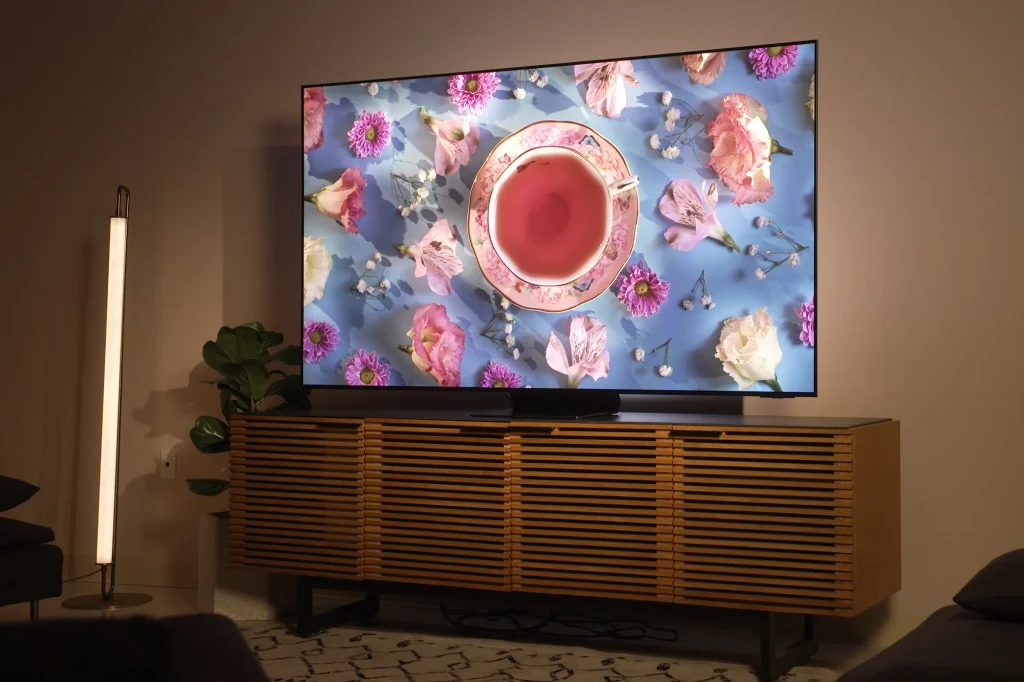TV and AudioOLED and LED TVs: What’s the difference?

Television is the cornerstone of home entertainment and TV technology is constantly evolving with the aim of providing the best viewing experience. The main contenders in the modern TV market are OLED (Organic Light Emitting Diode) and LED (Light Emitting Diode) TVs. In this guide, we’ll explore these technologies and help you understand the differences between them so you can make an informed decision when buying your next TV.
Understanding TV Technology: The Basics
TV technology has come a long way since the first black-and-white television set was introduced. Today, the focus is on OLED and LED TVs. Both terms refer to the type of panel and lighting used in the screen.
OLED TVs use a technology known as organic light-emitting diodes.Each pixel in an OLED display is made of a material that glows when an electric current is applied. It is organic because these materials are carbon-based. The main advantage of this method is that each pixel can be brightened, dimmed or turned off completely independently, providing excellent contrast and depth.
On the contrary, LED TVs use a different type of technology. These TVs are essentially LCD screens with LED backlighting.LEDs are located at the edges behind or around the screen, illuminating the liquid crystal display (LCD). While these TVs can provide excellent image quality, they may not be able to match the contrast and color depth of OLED TVs due to their reliance on backlighting.
The Real Difference Between OLED and LED TVs
When it comes to differentiating between OLED and LED TVs, it’s the light control that matters most.OLED TVs offer superior picture quality, displaying better black levels and contrast due to the ability to control lighting pixel by pixel. This also produces an impressive color range and smooth motion. However, OLED technology may be more susceptible to the risk of aging, as leaving a static image on the screen for an extended period of time can lead to permanent display damage.
LED TVs, while lacking the ability to control the lighting of individual pixels, tend to be more economical, durable, and energy efficient. the lifespan of LED TVs typically exceeds that of oled, and they are considerably less susceptible to aging. However, they can suffer from inconsistent black levels, reduced viewing angles, and reduced color accuracy compared to OLED TVs.
How the 4K revolution and OLED TVs step up the game
Resolution is a key factor when considering the quality of your TV. 4K or Ultra High Definition (UHD) refers to a display resolution that’s roughly four times that of Full HD. 4K OLED TVs can take full advantage of their pixel-by-pixel lighting control, making 4K content look incredibly detailed and vibrant.
How to know if your TV is an OLED TV
If you’re not sure if your TV is OLED, here are some clues to look for.OLED TVs typically have a very thin profile, almost paper-like. On screen, they exhibit very deep blacks and vibrant, accurate colors. You can also confirm this by looking up the model number online or checking the product details in the owner’s manual.
LED and OLED TVs:Which is better for you?
Your choice between OLED and LED TVs depends on your viewing preferences, budget, and environment.OLED TVs have excellent contrast and color accuracy, making them ideal for movie fans and gamers, provided they’re within your budget. They also perform well in dimly lit rooms. On the other hand, LED TVs are suitable for the average TV viewer who likes durability and lower prices. They are less likely to age and usually last longer.LED TVs also perform better in brightly lit rooms. Additionally, LED TVs come in a wider range of sizes:If you want a TV larger than 85 inches, then you’ll be looking for an LED TV.
In the end, both OLED and LED TVs have their own advantages. Your final choice should depend on your specific requirements and preferences. By considering the points discussed in this guide, you will be better prepared to make an informed decision to ensure a satisfying TV viewing experience for years to come.
Frequently Asked Questions
Finally, let’s address some frequently asked questions about OLED and LED TVs:.
Can LED TVs display 4K resolution?
Yes, most LED TVs have 4K resolution.
How long do OLED TVs last?
While it varies, OLED TVs usually last around 100,000 hours.
Is aging a common problem with OLED TVs?
Aging can occur, but it’s usually only a risk if a static image is left on the screen for an extended period of time.
Remember, an informed decision is the best decision. Modern TV technology has come a long way with two types of TVs, OLED and LED TVs, offering superior entertainment value. Decide on the size and price range of the TV you want, then take a look at the options for both types on Best Buy. We hope this guide helps you find the perfect TV.







